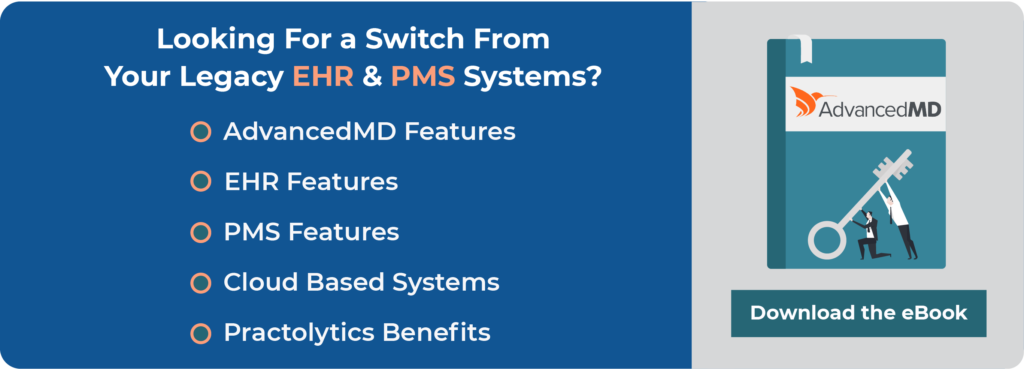Effects of Patient AR Build Up On Your Practice – Best Practices to Set Your House In Order
Virtually every healthcare organization is faced with the challenge of maintaining cash flow at one point or the other. In general, “Account Receivable” (AR) refers to the amount a customer owes a company or institution. It also means the same in the healthcare space. But there, the amount owed must be due and must be within a period of one year.
Services relating to account receivable include insurance receivable, write-offs, reviews centering on bad debts, ratio analysis, as well as collection analysis. It also includes analysis of all insurance contracts, and ensures that healthcare workers get the correct reimbursement.
If you’re looking to build up on your practice or set your house in order, here’s your luck. In this post, you’ll find all you need to know about account receivable, and more. Keep reading.
Table of Contents
What Is An Account Receivable Analysis?
A critical part of the AR analysis is the summary of accounts receivables, otherwise known as the AR summary.
The AR summary will show you which patients owe money, how much they owe, and whose debt is due for payment. It can also help you assess receivables in several ways, ranging from individual patient to payer class, down to insurance plan. But first, ensure your patient’s eligibility for insurance is verified by your billing staff prior to their service date to prevent their obligations from going into AR stockpile.
Upon reviewing the AR summary, it is advisable to examine each payer class and make sure that the AR totals grouped by a suitable time frame (such as 30 days, 60 days, and so on) are ideal for such class. For instance, a large volume of AR in a 120-day bucket may suggest or indicate that medical claims aren’t being worked or written off properly.
Following up on AR: what steps should be taken?
No doubt, collecting charges at the particular time of service will go a long way in reducing. Also, patients who have variable copayments may be charged similarly too–at the time of service.
Overheads in healthcare organizations are caused by a number of factors today, including backlogs in claims, collections delay and strict legal requirements. And this way, healthcare organizations are under more pressure to keep up with denied and appealed claims.
During the long period when an account does not get collected, the providers suffer not only revenue loss, but also the expense of setting aside materials for collection.
ALSO READ – Major Challenges in Documentation & Coding for Pain Management Services
How to Reduce AR Days – Pro Tips
Employees With Experience and Training
It can be time-consuming and expensive to train employees in the latest coding and billing techniques. But if done, it can save healthcare organizations a lot of spending in the long run. A lack of training for billing staff can lead to coding and billing errors which may eventually result in unnecessary spending.
Automated AR Department
In recent years, technology has rapidly developed, providing businesses with tools for streamlining processes, reducing costs and also improving efficiency and productivity.
With the best software for medical billing, you can track a lot of different things (such as bills that are past due and late fees) simultaneously, and also streamline the entire collection process.
Unlike manual processing, the automated AR helps in streamlining business processes. It also contributes to improved cash flow, cost reductions, and enhanced customer service. Practolytics provides their clients with one of the best in class platforms, enabling them to review, track and collect all the money that’s lying in the Account Receivables.
Working the AR
The process of working begins with the analysis of reports and patient statements. Both patients and insurance companies use the AR report to collect long-due balances.
It is best to categorize AR reports by payer (patient balance versus insurance balance), days (e.g., patient balances exceeding 90 days), and total amount for balance (i.e. within a category, sort by balance owed). Next, there is the collection process for AR.
If your staff is making collections calls to patients, they should consider starting with the largest accounts. Also, establish the lowest level for writing off small balances. Regardless of the pattern you use for AR, you shouldn’t miss any accounts.
How to Manage Accounts According to Best Practices Manage Denials
An important aspect of Accounts Receivable management is identifying the cause of claim denials. Claims must be analyzed, corrected, and re-filed without delay by staff who possess the required skills. Also, an examination of denial patterns is essential to finding solutions that will prevent future denials from occurring.
Prompt Follow-up
Cash flow may be interrupted if you don’t keep track of the AR. Keeping track of all claims filed is part of an integrated accounts receivable management system. Moreover, should the claims not be paid back within a period of thirty days, an action plan will be put in place, and the team will make sure no payment is underpaid or overdue.
Following Up With Patients
Payment from patients became more important than those from insurers after self-pay was introduced. For efficiency, ensure patient AR is followed-up with via emails or calls or emails, and that’s to ensure there are no loopholes.
Payments are timely when there is a good patient to provider relationship. Prior to providing care, patients should be informed about their impending financial obligations, and there should be some patient payment plans too.
Periodic Audits and Reporting
Conducting frequent audits, including checking for problems and assessing risks, is one of the top characteristics of an excellent AR management team. After the audits are conducted, the team submits a report. The report may include reports on aging AR, unpaid invoices, etc. It will prevent future denial of claims and ensure timely payments–some kind of good denial management scheme.
Conclusion
The vast majority of medical billing companies find it difficult to manage their AR, and that’s because they’ve got several responsibilities. If you’re one in this category, then you know what to do–outsource. A reliable medical billing company offshore can provide you with all the medical billing services you’ll need. Talk to Practolytics and you will sure find the best in the industry handling your Account Receivables.
Talk to Medical Billing Expert Today — Get a Free Demo Now!





